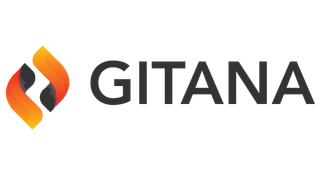Found 494 results for "gitana 4.0 developers api resources client post-clients-clientid-update"
The search executed in 0.003 seconds. That's fast.

|
Gitana 4.0 / Reference / Types / ProjectDocumentation Reference Explore our comprehensive API documentation for creating, managing, and maintaining platform projects seamlessly. (Gitana 4.0)
Score: 0.6426
|

|
Gitana 4.0 / Forms / Fields / Editor FieldDocumentation Reference Powerful online editor using Cloud 9 ACE with support for multiple languages, themes, and customizable features. (Gitana 4.0)
Score: 0.6334
|

|
How AI Enhances the Content LifecycleBlog Post Discover how AI transforms content management into a dynamic, self-improving knowledge ecosystem through Retrieval-Augmented Generation.
Score: 0.6039
|

|
Gitana 3.2 / Guide / Guide / API / Data Types / Scheduled WorkDocumentation Reference Optimize and configure scheduled work items using Cloud CMS platform administration tools or programmatically. (Gitana 3.2)
Score: 0.6039
|

|
Gitana 4.0 / Forms / API / ConnectorsDocumentation Reference Optimize Alpaca's integration with remote data sources using flexible connectors for seamless schema management. (Gitana 4.0)
Score: 0.6039
|

|
Gitana 3.2 / Guide / Guide / Actions / Send EmailDocumentation Reference Effortlessly send emails by specifying provider, recipient, sender, body, and subject for flexible configuration. (Gitana 3.2)
Score: 0.5979
|

|
Gitana 4.0 / Content Engine / Behaviors / Actions / Send EmailDocumentation Reference Effortlessly send emails with custom configurations; define provider, recipient, sender, email body, and subject. (Gitana 4.0)
Score: 0.5979
|

|
Gitana 4.0 / Forms / Fields / Upload FieldDocumentation Reference Easily upload files with thumbnail previews and progress tracking using our robust, customizable HTML5 file upload control. (Gitana 4.0)
Score: 0.5771
|

|
Gitana 3.2 / Guide / Guide / Docker / Maintenance / Datastore DeletionDocumentation Reference Learn how to manually remove MongoDB databases after deleting Cloud CMS datastores, ensuring backup policies. (Gitana 3.2)
Score: 0.5525
|

|
Gitana 3.2 / Guide / Guide / Multifactor AuthenticationDocumentation Reference Enhance your account security with Cloud CMS's Multifactor Authentication to prevent unauthorized access. (Gitana 3.2)
Score: 0.5299
|

|
Gitana 4.0 / Content Engine / Multifactor AuthenticationDocumentation Reference Secure your Cloud CMS account using MFA for an additional layer of protection against unauthorized access. (Gitana 4.0)
Score: 0.5299
|

|
Gitana 3.2 / Guide / Guide / AuditingDocumentation Reference Cloud CMS audit system logs user and content interactions for on-premise Docker clients, enhancing tracking and compliance. (Gitana 3.2)
Score: 0.44
|

|
Gitana 3.2 / Guide / Guide / Forms / Fields / CK EditorDocumentation Reference Configure CKEditor for visual HTML editing with custom plugins and flexible toolbar options. Explore Alpaca Forms and Cloud CMS integration. (Gitana 3.2)
Score: 0.44
|

|
Gitana 4.0 / Content Engine / Platform / AuditingDocumentation Reference Enable auditing for Cloud CMS on-premise Docker setups to track user-content interactions efficiently. (Gitana 4.0)
Score: 0.44
|

|
Gitana 4.0 / Forms / CMS / Fields / CK EditorDocumentation Reference Enhance your forms with CKEditor for a full-featured, customizable HTML editor ideal for visual editing and plugins. (Gitana 4.0)
Score: 0.44
|

|
Gitana 3.2 / Guide / Guide / Single Sign On (SSO)Documentation Reference Enable seamless access with Cloud CMS SSO, integrating SAML 2.0 and JWT for secure enterprise authentication. (Gitana 3.2)
Score: 0.4282
|

|
Gitana 4.0 / Content Engine / Single Sign On (SSO)Documentation Reference Enable seamless access to Cloud CMS with SSO using SAML 2.0 and JWT, integrating with popular identity providers. (Gitana 4.0)
Score: 0.4282
|

|
Gitana 4.0 / Reference / Types / Web HostDocumentation Reference Explore our comprehensive Web Host documentation to manage data stores, tenants, and plans effectively. (Gitana 4.0)
Score: 0.3974
|

|
Gitana 4.0 / Reference / Types / Deployed ApplicationDocumentation Reference Explore comprehensive documentation for Deployed Application, including APIs, properties, and methods for seamless integration. (Gitana 4.0)
Score: 0.3656
|
